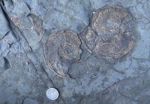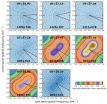(Press-News.org) CAMBRIDGE, Mass. — In the search for renewable alternatives to gasoline, heavy alcohols such as isobutanol are promising candidates. Not only do they contain more energy than ethanol, but they are also more compatible with existing gasoline-based infrastructure. For isobutanol to become practical, however, scientists need a way to reliably produce huge quantities of it from renewable sources.
MIT chemical engineers and biologists have now devised a way to dramatically boost isobutanol production in yeast, which naturally make it in small amounts. They engineered yeast so that isobutanol synthesis takes place entirely within mitochondria, cell structures that generate energy and also host many biosynthetic pathways. Using this approach, they were able to boost isobutanol production by about 260 percent.
Though still short of the scale needed for industrial production, the advance suggests that this is a promising approach to engineering not only isobutanol but other useful chemicals as well, says Gregory Stephanopoulos, an MIT professor of chemical engineering and one of the senior authors of a paper describing the work in the Feb. 17 online edition of Nature Biotechnology.
"It's not specific to isobutanol," Stephanopoulos says. "It's opening up the opportunity to make a lot of biochemicals inside an organelle that may be much better suited for this purpose compared to the cytosol of the yeast cells."
Stephanopoulos collaborated with Gerald Fink, an MIT professor of biology and member of the Whitehead Institute, on this research. The lead author of the paper is Jose Avalos, a postdoc at the Whitehead Institute and MIT.
Historically, researchers have tried to decrease isobutanol production in yeast, because it can ruin the flavor of wine and beer. However, "now there's been a push to try to make it for fuel and other chemical purposes," says Avalos, the paper's lead author.
Yeast typically produce isobutanol in a series of reactions that take place in two different cell locations. The synthesis begins with pyruvate, a plentiful molecule generated by the breakdown of sugars such as glucose. Pyruvate is transported into the mitochondria, where it can enter many different metabolic pathways, including one that results in production of valine, an amino acid. Alpha-ketoisovalerate (alpha-KIV), a precursor in the valine and isobutanol biosynthetic pathways, is made in the mitochondria in the first phase of isobutanol production.
Valine and alpha-KIV can be transported out to the cytoplasm, where they are converted by a set of enzymes into isobutanol. Other researchers have tried to express all the enzymes needed for isobutanol biosynthesis in the cytoplasm. However, it's difficult to get some of those enzymes to function in the cytoplasm as well as they do in the mitochondria.
The MIT researchers took the opposite approach: They moved the second phase, which naturally occurs in the cytoplasm, into the mitochondria. They achieved this by engineering the metabolic pathway's enzymes to express a tag normally found on a mitochondrial protein, directing the cell to send them into the mitochondria.
This enzyme relocation boosted the production of isobutanol by 260 percent, and yields of two related alcohols, isopentanol and 2-methyl-1-butanol, went up even more — 370 and 500 percent, respectively.
There are likely several explanations for the dramatic increase, the researchers say. One strong possibility, though difficult to prove experimentally, is that clustering the enzymes together makes it more likely that the reactions will occur, Avalos says.
Another possible explanation is that moving the second half of the pathway into the mitochondria makes it easier for the enzymes to snatch up the limited supply of precursors before they can enter another metabolic pathway.
"Enzymes from the second phase, which are naturally out here in the cytoplasm, have to wait to see what comes out of the mitochondria and try to transform that. But when you bring them into the mitochondria, they're better at competing with the pathways in there," Avalos says.
The findings could have many applications in metabolic engineering. There are many situations where it could be advantageous to confine all of the steps of a reaction in a small space, which may not only boost efficiency but also prevent harmful intermediates from drifting away and damaging the cell.
The researchers are now trying to further boost isobutanol yields and reduce production of ethanol, which is still the major product of sugar breakdown in yeast.
"Knocking out the ethanol pathway is an important step in making this yeast suitable for production of isobutanol," Stephanopoulos says. "Then we need to introduce isobutanol synthesis, replacing one with the other, to maintain everything balanced within the cell."
###
The research was funded by the National Institutes of Health and Shell Global Solutions.
Written by: Anne Trafton, MIT News Office END
Engineering cells for more efficient biofuel production
Yeast research takes a step toward production of alternatives to gasoline
2013-02-19
ELSE PRESS RELEASES FROM THIS DATE:
Horses don't have stage fright -- but their riders do
2013-02-19
It is well known that horses show symptoms of stress when ridden but relatively little attention has been paid to the effects on their riders. This is surprising, as equestrian sports rely on the close cooperation between the animals and their riders. How does the horse-rider team cope with the stress involved in competing in an equestrian event?
The issue has now been studied by Mareike von Lewinski in the group of Christine Aurich at the University of Veterinary Medicine, Vienna (Vetmeduni Vienna), together with colleagues at the Vetmeduni Vienna and at the Ecole ...
Don't trust liposomes in your beauty products
2013-02-19
Liposomes are small fat capsules, often added to beauty products.
According to the beauty industry liposomes are capable of transporting active ingredients deep into the skin and release the active ingredients so that they can alter the skin´s structure by rejuvenating and smoothing the skin.
Research from University of Southern Denmark now shows that liposomes are not capable of transporting themselves deep into the skin, and thus they are not capable of transporting active ingredients deep into the skin.
"We have shown that liposomes are destroyed before they ...
Nicotine lozenges, tobacco-free snuff help smokeless tobacco users quit, Mayo Clinic finds
2013-02-19
ROCHESTER, Minn. -- Smokeless tobacco users who said they didn't want to quit changed their minds or significantly cut back when given nicotine lozenges or tobacco-free snuff in a Mayo Clinic study. The findings are published in the February issue of Addictive Behaviors.
Mayo researchers recruited 81 users of chewing tobacco or snuff with no intention of quitting in the next 30 days. Forty were given 4-mg nicotine lozenges and 41 received tobacco-free snuff to help cut back their smokeless tobacco use. They were asked to cut back 50 percent by one month and 75 percent ...
Fungi offers new clues in asthma fight, say Cardiff scientists
2013-02-19
Hundreds of tiny fungal particles found in the lungs of asthma sufferers could offer new clues in the development of new treatments, according to a team of Cardiff University scientists.
In the first large study of its type, published in the journal, BMC Infectious Diseases, a team of researchers from Cardiff University's School of Medicine have uncovered large numbers of fungi present in healthy lungs.
"Historically, the lungs were thought to be sterile," according to Dr Hugo van Woerden from Cardiff University's Institute of Primary Care and Public Health, who led ...
Is there a link between coffee drinking and mortality?
2013-02-19
New Rochelle, NY, February 19, 2013–A large study of nearly half a million older adults followed for about 12 years revealed a clear trend: as coffee drinking increased, the risk of death decreased. Study author Neal Freedman, PhD, MPH, National Cancer Institute, discusses the significance of these findings and the potential links between coffee drinking, caffeine consumption, and various specific causes of disease in an interview in Journal of Caffeine Research, a peer-reviewed journal from Mary Ann Liebert, Inc., publishers. The article is available free on the Journal ...
Fear, anger or pain -- Why do babies cry?
2013-02-19
VIDEO:
Spanish researchers have studied adults’ accuracy in the recognition of the emotion causing babies to cry. Eye movement and the dynamic of the cry play a key role in recognition.
Click here for more information.
Spanish researchers have studied adults' accuracy in the recognition of the emotion causing babies to cry. Eye movement and the dynamic of the cry play a key role in recognition.
It is not easy to know why a newborn cries, especially amongst first-time ...
Study shows reduced risk of preterm birth for pregnant women vaccinated during pandemic flu
2013-02-19
ATLANTA- Pregnant women who received the H1N1 influenza vaccine during the 2009 pandemic were less likely to have premature babies, and their babies weighed more on average.
Influenza infection during pregnancy is associated with adverse infant outcomes such as preterm birth. Emory researchers from the Rollins School of Public Health, in a joint study with Kaiser Permanente of Georgia and the Mid-Atlantic States, evaluated the effectiveness of the H1N1 influenza vaccine in pregnant women against adverse infant outcomes during the 2009 pandemic. They compared birth outcomes ...
Jurassic records warn of risk to marine life from global warming
2013-02-19
Researchers at Plymouth University, UK, believe that findings from fieldwork along the North Yorkshire coast reveal strong parallels between the Early Jurassic era of 180 million years ago and current climate predictions over the next century.
Through geology and palaeontology, they've shown how higher temperatures and lower oxygen levels caused drastic changes to marine communities, and that while the Jurassic seas eventually recovered from the effects of global warming, the marine ecosystems that returned were noticeably different from before.
The results of the Natural ...
Towards a new moth perfume
2013-02-19
A single mutation in a moth gene has been shown to be able to produce an entirely new scent. This has been shown in a new study led by researchers from Lund University in Sweden. In the long run, the researchers say that the results could contribute to tailored production of pheromones for pest control.
Male moths can pick up the scent of a female moth from a distance of several hundred metres. The females produce sexual pheromones – scent substances that guide the males to them. There are around 180 000 species of moth and butterfly in the world, and most of them communicate ...
Radio telescope, GPS use ionosphere to detect nuclear tests
2013-02-19
WASHINGTON--U.S. Naval Research Laboratory radio astronomer, Joseph Helmboldt, Ph.D., and researchers at Ohio State University Department of Civil, Environmental and Geodetic Engineering analyzed radio telescope interferometry and Global Positioning Satellite (GPS) data recorded of the ionosphere during one of the last underground nuclear explosions (UNEs) in the U.S., codenamed Hunters Trophy.
Situated in the Plains of San Agustin, 50 miles west of Socorro, New Mexico, twenty-seven 25-meter parabolic dish antennas collectively make up the National Radio Astronomy Observatory's ...
LAST 30 PRESS RELEASES:
Making lighter work of calculating fluid and heat flow
Normalizing blood sugar can halve heart attack risk
Lowering blood sugar cuts heart attack risk in people with prediabetes
Study links genetic variants to risk of blinding eye disease in premature infants
Non-opioid ‘pain sponge’ therapy halts cartilage degeneration and relieves chronic pain
AI can pick up cultural values by mimicking how kids learn
China’s ecological redlines offer fast track to 30 x 30 global conservation goal
Invisible indoor threats: emerging household contaminants and their growing risks to human health
Adding antibody treatment to chemo boosts outcomes for children with rare cancer
Germline pathogenic variants among women without a history of breast cancer
Tanning beds triple melanoma risk, potentially causing broad DNA damage
Unique bond identified as key to viral infection speed
Indoor tanning makes youthful skin much older on a genetic level
Mouse model sheds new light on the causes and potential solutions to human GI problems linked to muscular dystrophy
The Journal of Nuclear Medicine ahead-of-print tip sheet: December 12, 2025
Smarter tools for peering into the microscopic world
Applications open for funding to conduct research in the Kinsey Institute archives
Global measure underestimates the severity of food insecurity
Child survivors of critical illness are missing out on timely follow up care
Risk-based vs annual breast cancer screening / the WISDOM randomized clinical trial
University of Toronto launches Electric Vehicle Innovation Ontario to accelerate advanced EV technologies and build Canada’s innovation advantage
Early relapse predicts poor outcomes in aggressive blood cancer
American College of Lifestyle Medicine applauds two CMS models aligned with lifestyle medicine practice and reimbursement
Clinical trial finds cannabis use not a barrier to quitting nicotine vaping
Supplemental nutrition assistance program policies and food insecurity
Switching immune cells to “night mode” could limit damage after a heart attack, study suggests
URI-based Global RIghts Project report spotlights continued troubling trends in worldwide inhumane treatment
Neutrophils are less aggressive at night, explaining why nighttime heart attacks cause less damage than daytime events
Menopausal hormone therapy may not pose breast cancer risk for women with BRCA mutations
Mobile health tool may improve quality of life for adolescent and young adult breast cancer survivors
[Press-News.org] Engineering cells for more efficient biofuel productionYeast research takes a step toward production of alternatives to gasoline



